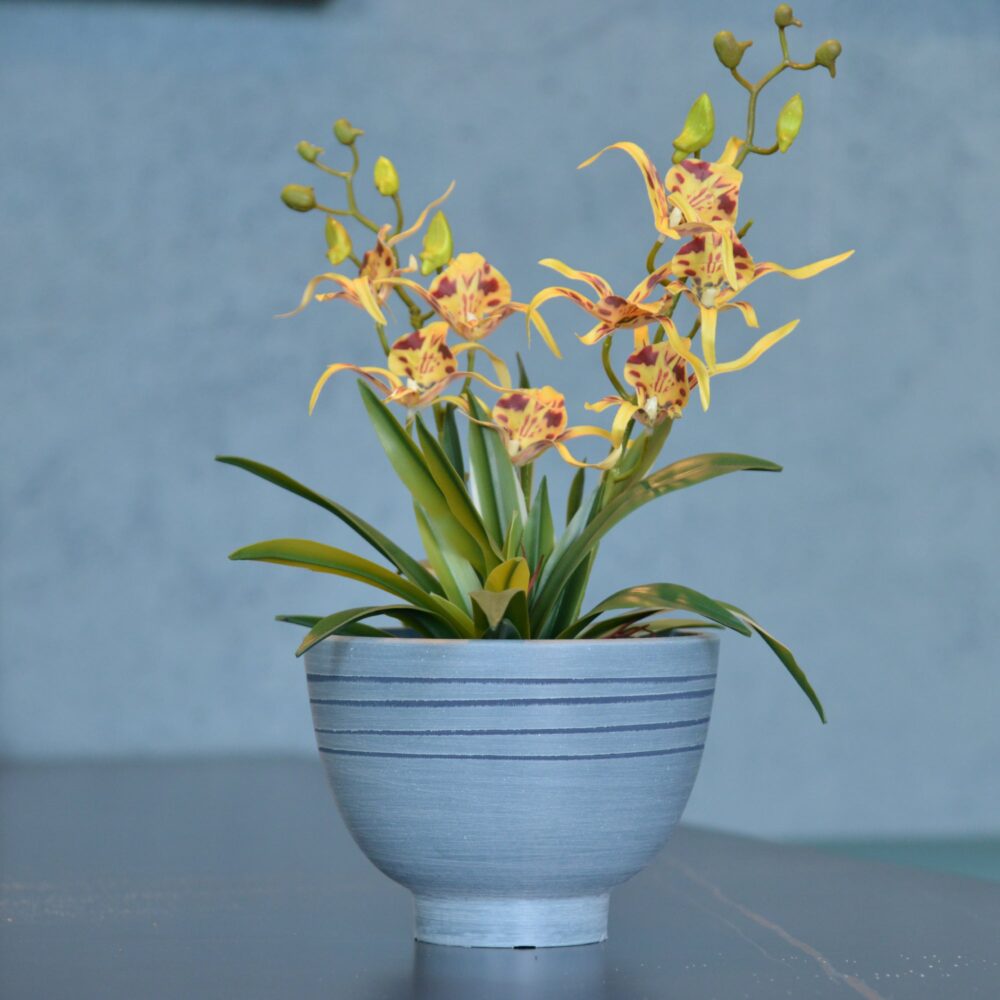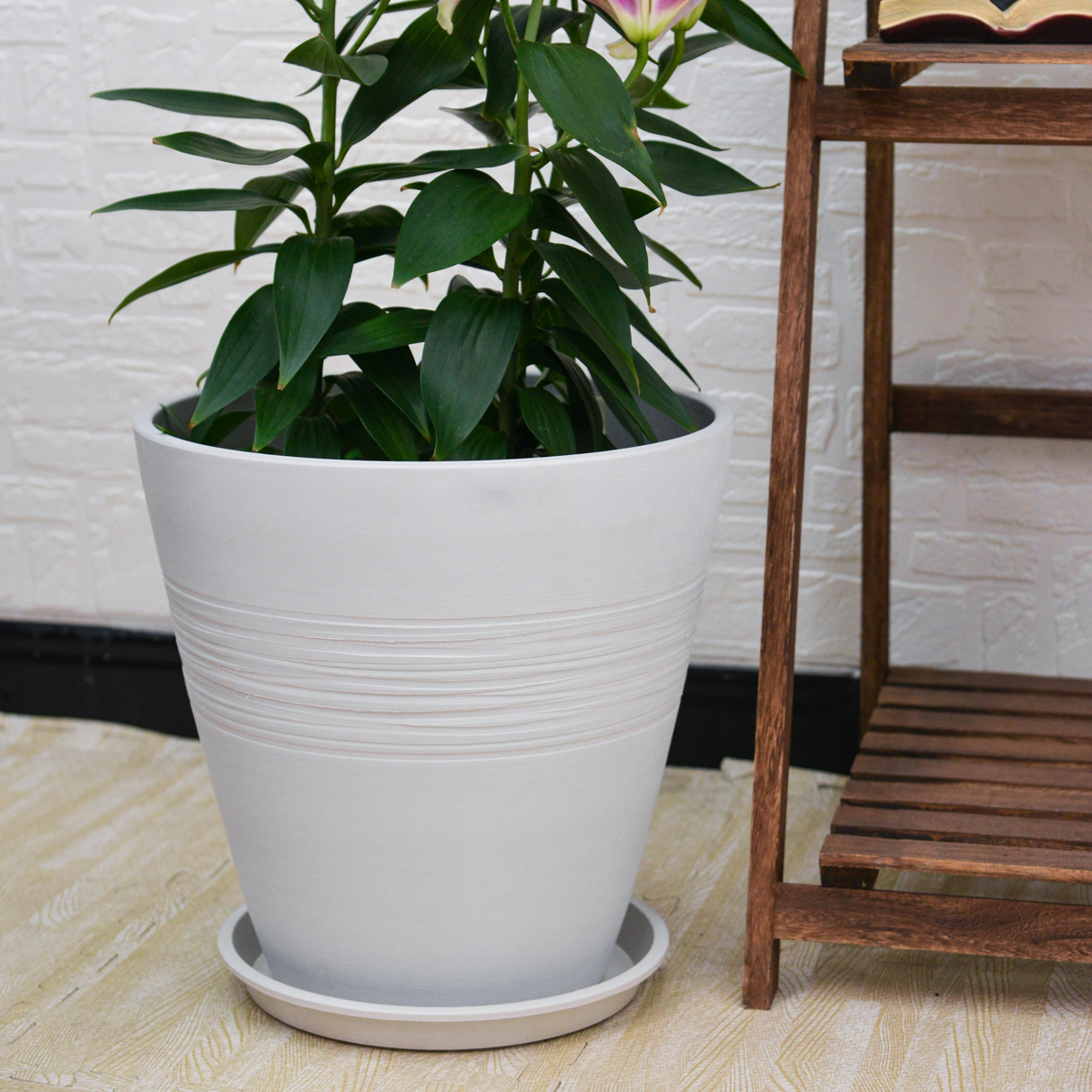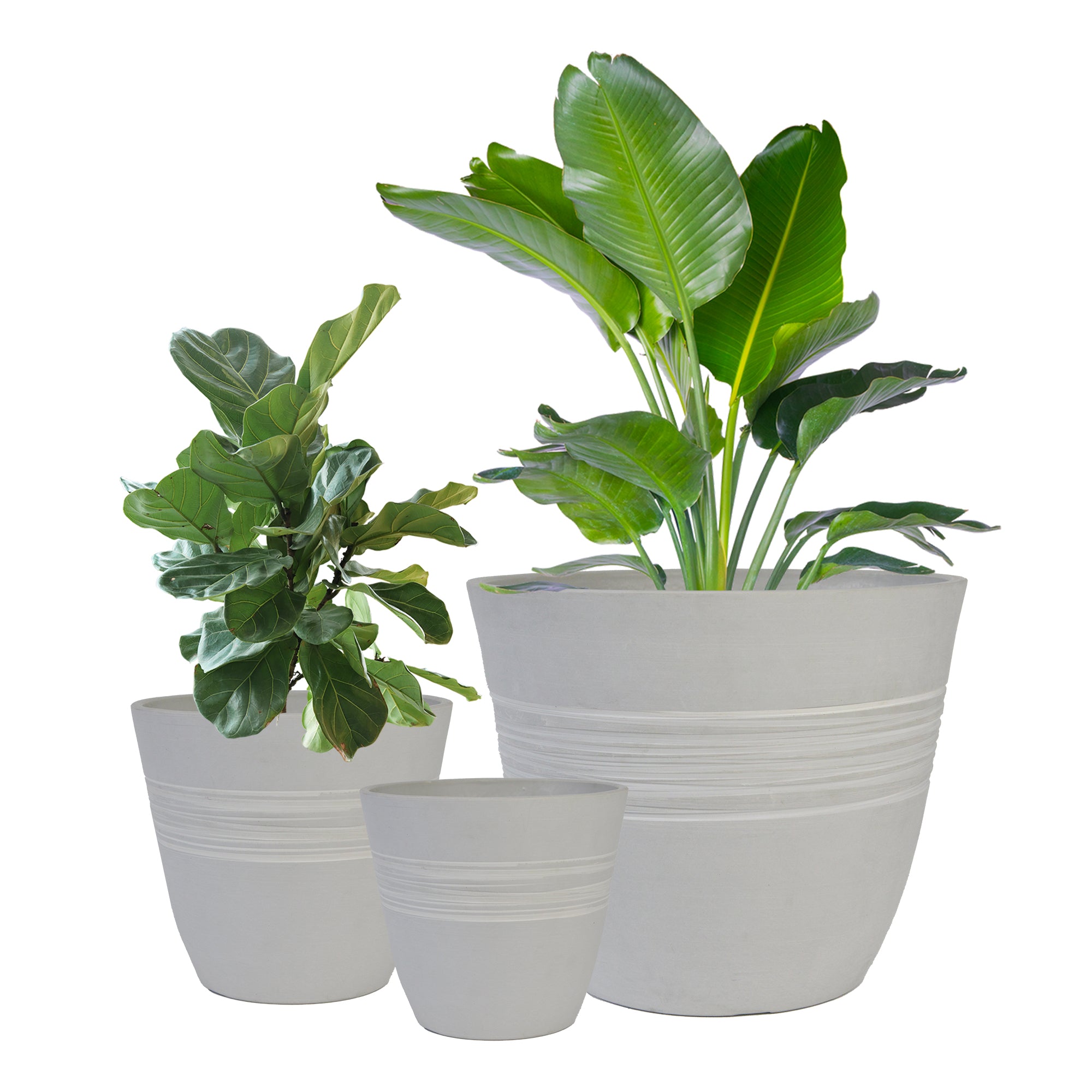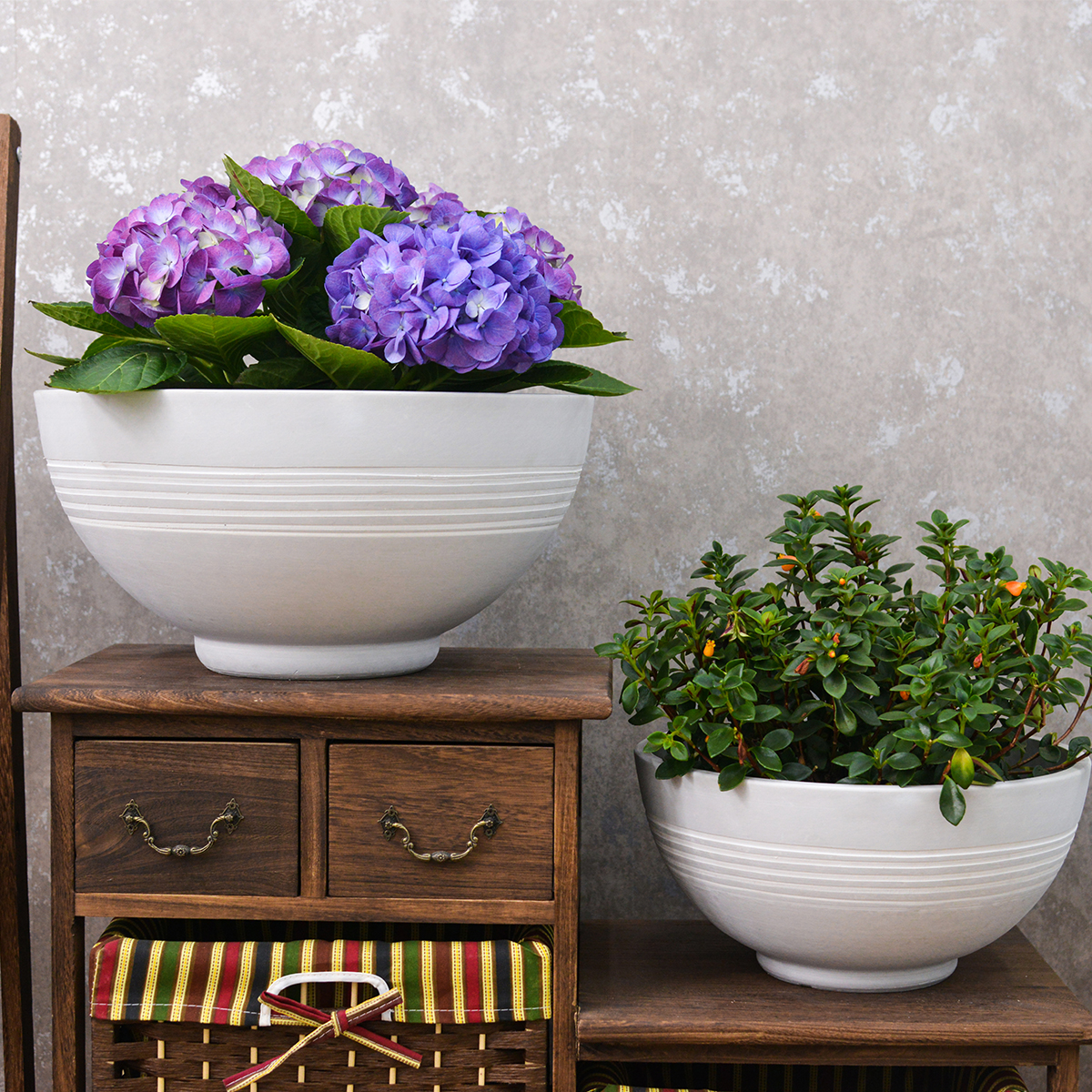Peace Lily (Spathiphyllum): The Complete Guide to Indoor Care and Elegant Blooms
Looking for an elegant, air-purifying houseplant that’s also easy to care for? The Peace Lily, scientifically known as Spathiphyllum, is a classic and beloved choice for indoor gardeners. Native to tropical regions of the Americas and Southeast Asia, this graceful plant, belonging to the Araceae family, is prized for its lush green foliage and beautiful white flowers (actually modified leaves called spathes). This comprehensive guide will provide you with everything you need to know to successfully grow Spathiphyllum indoors and enjoy its peaceful beauty.
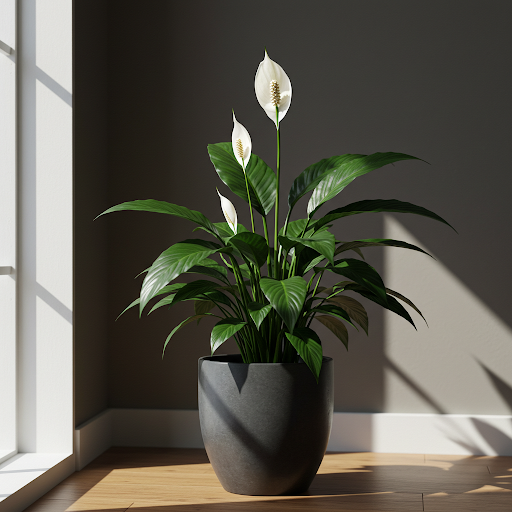
Peace Lily
Ideal Indoor Growing Conditions:
- Light: Peace Lilies thrive in medium to low indirect light. They are known for their tolerance of shade, making them suitable for rooms with north-facing windows or areas away from direct sunlight. While they can tolerate brighter indirect light, harsh direct sun can scorch their leaves. Low light may reduce flowering.
- Soil: Peace Lilies prefer well-draining, rich potting soil that retains moisture. A general-purpose potting mixworks well. You can amend it with perlite or peat moss to improve drainage and aeration.
- Watering: Peace Lilies prefer consistently moist soil, but not waterlogged. Water thoroughly when the top inch of soil feels dry. They are known to dramatically droop when they need water, making it easy to know when to water. However, avoid letting them wilt excessively as this can stress the plant over time. Reduce watering slightly in winter when growth slows.
- Temperature: Average room temperatures between 65°F to 80°F (18°C to 27°C) are ideal. Peace Lilies are sensitive to cold and should be protected from temperatures below 55°F (13°C).
- Humidity: Peace Lilies thrive in high humidity, mimicking their tropical rainforest environment. Aim for humidity levels of 50% or higher. Increase humidity by misting the leaves regularly, using a humidifier, grouping plants together, or placing the pot on a pebble tray filled with water. Brown leaf tips are often a sign of low humidity.
Planting Your Peace Lily:
- Starting from Divisions or Plants: Peace Lilies are typically propagated by division when repotting, or purchased as established plants from nurseries and garden centers.
- Division during Repotting: When repotting a mature Peace Lily, you can divide the rhizomes (underground stems) to create new plants. Ensure each division has roots and leaves.
- Planting Time: Peace Lilies can be planted or repotted at any time of year indoors, but spring or early summer, at the start of the growing season, is generally recommended for optimal establishment.
Choosing the Right Pots:
- Suitable Pot Types: Choose pots that provide good drainage and are appropriately sized for the plant. Plastic, ceramic, or terracotta pots are all suitable.
- Drainage: Good drainage is essential to prevent root rot. Ensure your chosen pot has drainage holes at the bottom.
- Pot Size: Select a pot that is only slightly larger than the root ball. Peace Lilies prefer to be slightly root-bound and bloom best when their roots are somewhat confined. Repot every 1-2 years or when the plant becomes root-bound, moving to a pot only slightly larger each time.
- Potting Mix: Use a well-draining, rich potting mix as described earlier.
Essential Care Tips for Blooming Peace Lilies:
- Watering Schedule: Maintain consistent soil moisture, watering when the top inch of soil feels dry. Do not allow the plant to sit in waterlogged soil, and ensure good drainage.
- Fertilizing: Peace Lilies benefit from regular feeding during the growing season (spring and summer) to encourage blooming. Fertilize every 4-6 weeks with a balanced liquid houseplant fertilizer diluted to half strength. Reduce or stop fertilizing during the fall and winter dormant period.
- Encouraging Blooms: To encourage Peace Lilies to bloom, provide adequate light (medium to bright indirect), consistent watering, and regular fertilization during the growing season. Remove spent flowers (spathes) at the base of the stem to encourage more blooms.
- Pruning: Prune to remove any yellow, brown, or damaged leaves at the base of the plant. You can also trim off spent flowers (spathes).
- Leaf Cleaning: Dust can accumulate on the leaves, hindering photosynthesis. Wipe the leaves with a damp cloth regularly to keep them clean and glossy.
- Repotting: Repot every 1-2 years or when the plant becomes root-bound. Repotting is also a good time to divide the plant if desired.
- Pest and Disease Control: Peace Lilies are generally resistant to pests and diseases. However, they can occasionally be affected by spider mites, mealybugs, or scale. Treat infestations promptly with insecticidal soap or neem oil. Root rot can occur if the plant is overwatered.
Popular Varieties of Peace Lilies (Spathiphyllum):
- Spathiphyllum wallisii: The most common type, often simply labeled “Peace Lily.”
- Spathiphyllum ‘Domino’: Variegated variety with white and green foliage.
- Spathiphyllum ‘Mauna Loa’: Larger variety with bigger leaves and flowers.
- Spathiphyllum ‘Sensation’: Giant Peace Lily with very large, ribbed leaves.
- Spathiphyllum ‘Petite’: Dwarf variety, suitable for smaller spaces.
In Summary:
The Peace Lily (Spathiphyllum) is a beautiful and rewarding houseplant that brings elegance and tranquility to any indoor space. Its air-purifying qualities, graceful white blooms, and relatively easy care make it a favorite for homes and offices. By providing medium to low indirect light, consistent moisture, high humidity, and occasional fertilization, you can enjoy the peaceful beauty of the Peace Lily in your indoor garden for years to come.
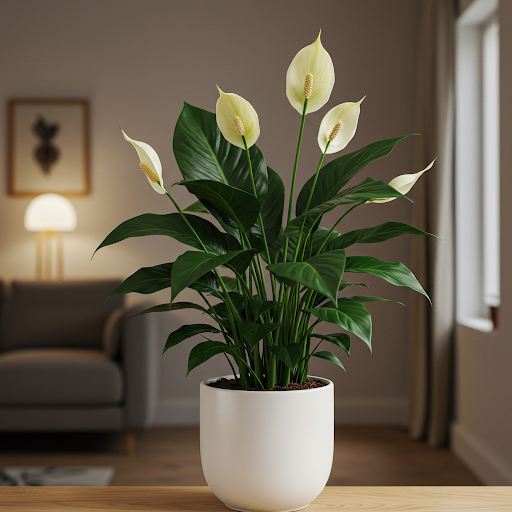
Peace Lily
For more detailed botanical information, you can explore the Wikipedia page on Spathiphyllum.
Important Note: Peace Lilies are considered mildly toxic if ingested due to calcium oxalate crystals. Keep them out of reach of children and pets who may be tempted to chew on the leaves.
8 inch/10 inch Planter Indoor Plants, 2 Pack Modern Decorative Plant Pots with Drainage Hole, Cute Bowl Shape Flower Pots
By greenship-seo|2025-04-10T08:03:42+00:00January 9, 2025|Categories: Hand-carving Series|Tags: Decorative Flower Pots, Self-Watering Pots|
KC2-GS
By greenship|2024-08-16T06:30:21+00:00August 16, 2024|Categories: Hand-carving Series|
Plant Pots 6 inch 8 inch 12 inch for Indoor Outdoor Plants, Set of 3 Modern Decorative Planter with Drainage Hole, Decorative Flower Pots
By greenship-seo|2025-04-10T06:38:40+00:00January 16, 2025|Categories: Hand-carving Series|Tags: Decorative Flower Pots|
KC2-21G
By greenship|2024-08-13T06:19:08+00:00August 13, 2024|Categories: Hand-carving Series|
Modern Plant Pots丨Planter for Indoor Plants,8 inch or 10 inch Plant Pots with Drainage Hole,Decorative Flower Pots
By greenship-seo|2025-04-10T08:32:55+00:00January 7, 2025|Categories: Hand-carving Series|Tags: Decorative Flower Pots, Self-Watering Pots|
KC3-09k
By greenship|2024-08-16T06:24:36+00:00August 16, 2024|Categories: Hand-carving Series|

